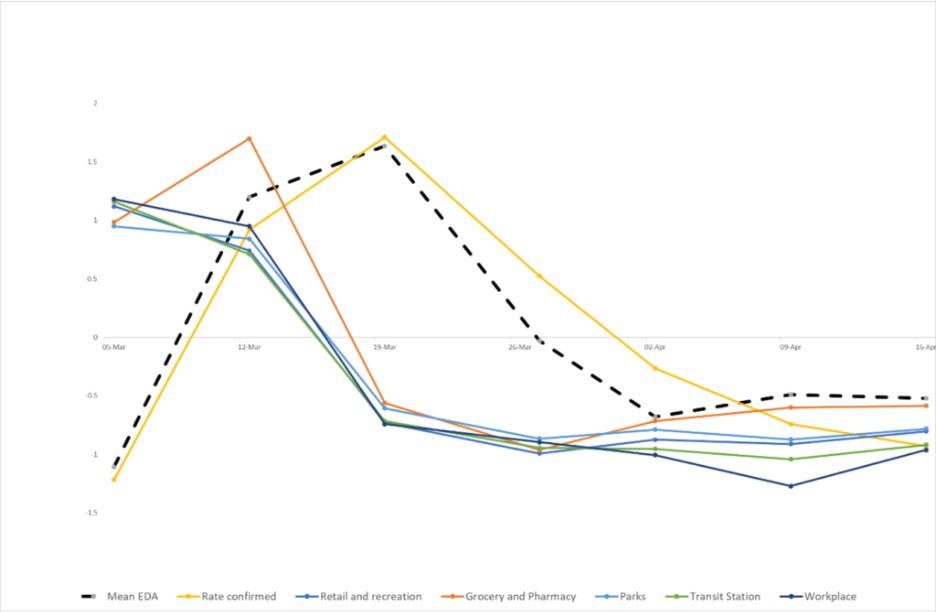No one in their right mind is saying it is over (most probably far from it actually) but these weeks have been an absolute emotional roller coaster as we watch disease counts and death tolls displayed every day on national television and start to see some light as some countries flatten the curve.
With so many unknowns, the moment is for all to join efforts and contribute in any way we can. Moreover, we can produce knowledge that helps policymakers deal with the outbreak, and design and effectively communicate measures to promote public health.
With this in mind, we started in early March (and are proud to have been joined by the School of Medicine of the University of Minho, Portugal since then) monitoring the responses of a panel of Portuguese participants as they watch the prime-time news.
Capturing the COVID-19 emotional journey
We were able to capture the entire “emotional journey” of viewers from the moment the pandemic started taking shape (in the week when the initial cases were reported) to accelerating and then starting to flatten.
Our focus was to understand how communication can be created to:
-
- induce the proper emotional responses in most people,
-
- motivate them to comply with governmental recommendations, and
-
- avoid stress-related mental conditions at the same time.
The line between causing someone to act and impacting them so much that we may be causing panic seems to be a thin one to navigate.
The line between causing someone to act and impacting them so much that we may be causing panic seesm to be a thin one to navigate.
Up to now, we have gathered electrodermal (EDA) a.k.a. galvanic skin response (GSR), declarative, and survey data from over 600 accumulated records across 7 weeks. In the next few posts, we will be looking at the insights we get from fusing arousal data with the specific events, words, expressions, and themes in the news, and bringing a big data framework to EDA analysis. The line between causing someone to act and impacting them so much that we may be causing panic seems to be a thin one to navigate.
The fear and the relief
For now, one key result is that after the initial acceleration of the virus that characterized the most impactful day when the National State of Emergency was declared (19 March 2020), we started to see relief both in the number of new cases and in emotional activation during the news.
Moreover, the evolution of the rate of new cases and viewer arousal (calculated from mean EDA or GSR activity over the entire news) is almost perfectly correlated. This shows that as cases decreased, viewers seemed to be less emotionally aroused by the news.

At the same time, peak emotional activation was coupled with a huge restraint in movement, as can be seen from Apple and Google COVID-19 mobility reports. Moreover, this restraint seemed to linger even as stress levels and reported concerns went down.

Furthermore, it seems is that a couple of emotionally intense weeks (the dark period), during which the news was not good and people were stressed and concerned, were effective in promoting mobility restraint that seems to hold beyond the emotional impact of the period.
Good news?
Is this good? The latest data on disease incidence shows that Portugal is indeed being able to control the number of cases (for now), without a major impact on the psychological well-being (for now). It is also the case that we will start to see more movement as people start relaxing and the government hints at less restrictive measures.
For the moment, our COVID-19 emotional journey analysis shows that the light at the end of the tunnel and the perceived efficacy of the measures seem to put people in a lighter mood.






